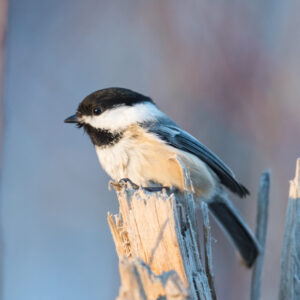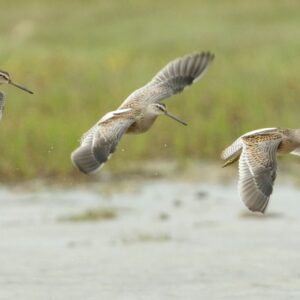Wolves: A Glimpse Into the Life of an Icon
Thank you to our Nature Network partner, Nature Alberta, for sharing this month’s blog.
Dr. Lu Carbyn, Past President and current Vice-President of Nature Alberta, one of 1,200 member organizations in Nature Canada’s Nature Network. He is a retired research scientist from the Canadian Wildlife Service. One of his six books, The Buffalo Wolf, won the Canadian National Geographic Society’s Best Wildlife Book of the Year award in 2004. He is currently an adjunct professor at the University of Alberta.
Wolves are the largest member of the dog family – known scientifically as Canids. They have a very wide distribution in the northern hemisphere and technically still inhabit about 85% of the Canadian landscape.
Yes, indeed, wolves are quite regularly reported, even in and around city centres such as Edmonton, AB. The North Saskatchewan River provides a convenient highway in winter connecting the city with the Rocky Mountains. That does not mean, however, that the species is integrated into highly modified, modern urban ecosystems. Competition between wolves and humans exists throughout their former ranges, and the species can only thrive in protected areas and remote wilderness areas where there is less competition with humans.
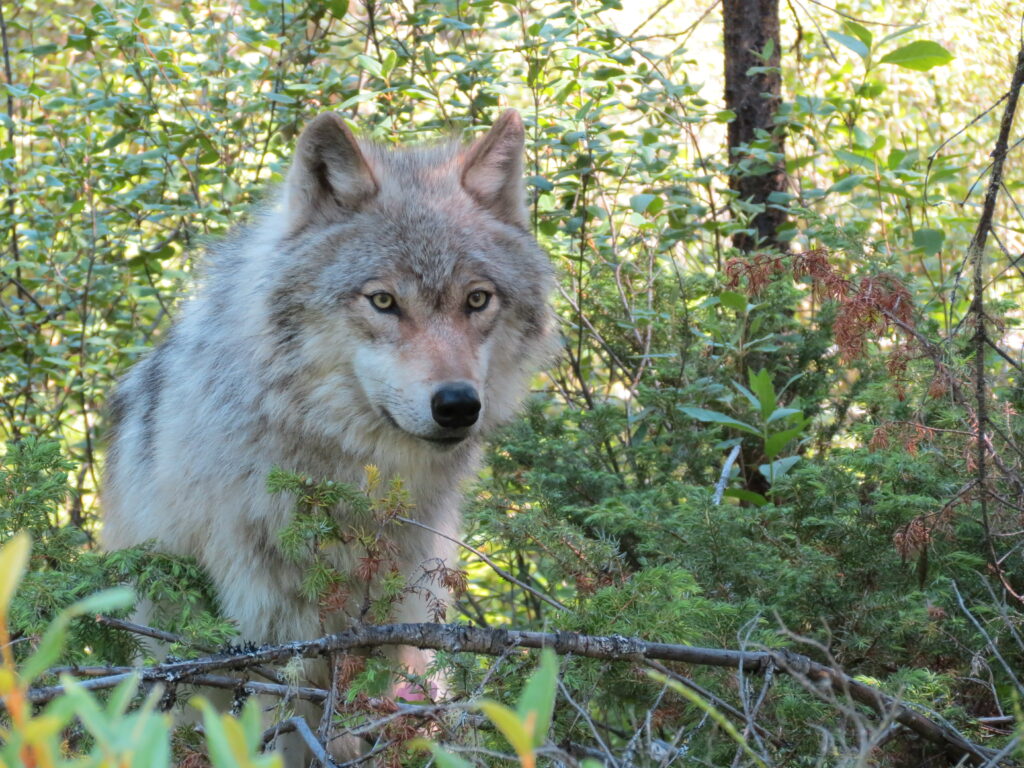
Stephanie Weizenbach, Nature Alberta
Are Wolves an Endangered Species?
Ecologist Douglas Pimlott raised that question in the 1960s. Persecution was intense, so he asked the question: “Can the species still be present on the continent when we move into the 21st century?”
We now know that, yes, in fact, the species survived and is actually far more common now than it had been in past centuries! The Canadian numbers have been estimated to be around 60,000.
Why? The answer is clear.
Conservation measures are in place. Poisoning is no longer in widespread use. The species, for the most part, is protected in most provinces, and reintroduction programs have been singularly successful wherever they occurred within the western parts of the United States.
The wolf is also one of the most widely studied wildlife species on the continent and in the world.
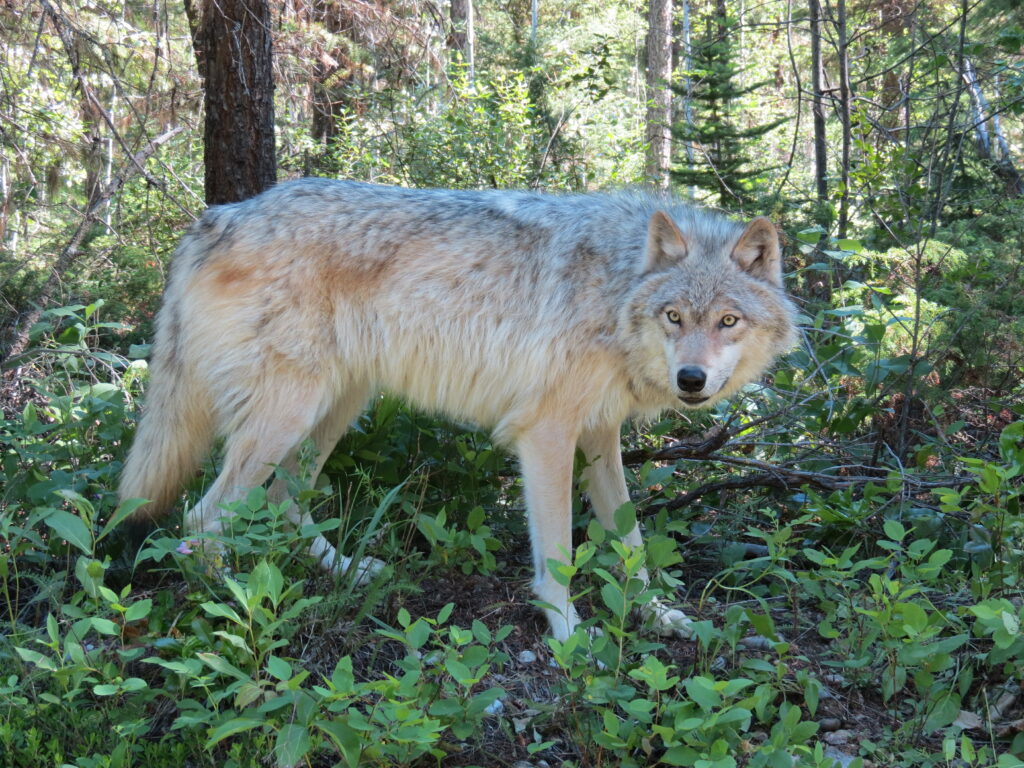
Stephanie Weizenbach, Nature Alberta
Life Cycle of the Wolf
Wolves have a complex social behavior and are very important in structuring large mammal ecosystems. This was particularly evident when, in the mid-1990s, wolves were introduced into Yellowstone National Park in the United States. The diverse wolf-prey system resulted in major alterations of numbers of prey animals and the shifting of large mammal impacts on the vegetation.
In April, pregnant females seek out dens that had likely been in use for many generations, or freshly dug earlier as soon as the soil thawed enough to accomplish the task.
Young are born blind and need warmth because of poor circulation. After a few weeks, they have grown enough to come out of the den, and by mid-June the family is ready to leave the dens and move to what is known as “rendezvous sites.” Adults leave each day to hunt for food and return to the pups on a regular basis.
Pups remain at the rendezvous sites until about the end of July, when the young become increasingly restless and switch to new areas. By the beginning of fall, the pups have grown up and will gradually join the adults in their hunting sojourns.
Winter is a time of packs moving about as a unit of young and old. In time, learning how to kill prey by the young makes it easier for the whole group to obtain food. It is at this time that wolves are most conspicuous on the landscape: packs roam from kill site to kill site, leaving much evidence in the snowy winter setting.
By mid-winter, the mating season begins, and the cycle of life comes full circle with the birthing phase. At this time, new generations of pups are born, repeating the next cycle in the life of a wolf pack.
Learn more about wolves by scrolling through the following facts and stats!
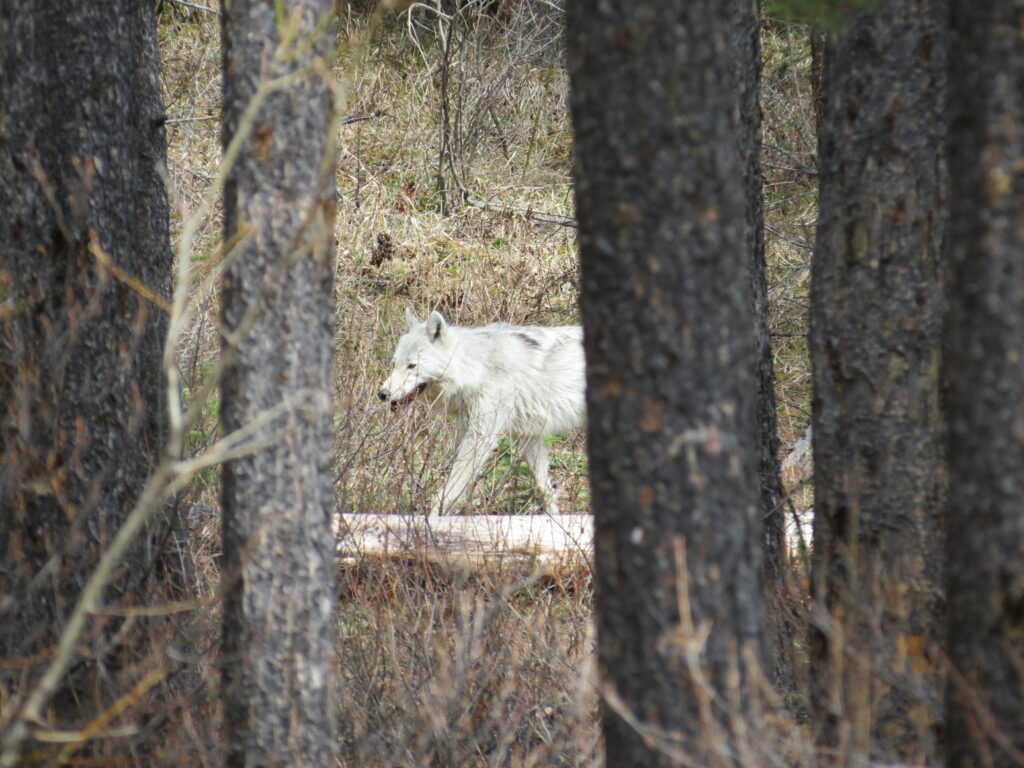
Stephanie Weizenbach, Nature Alberta
Senses and Communication
- Smell: excellent, although unmeasured. Estimated to be thousands of times better than humans.
- Vision: excellent night vision; no red or green cones, but have blue and yellow cones.
- Hearing: little is known, but probably similar to dogs (relatively normal hearing abilities compared to other mammals).
- Howling function: many uses, including intrapack communication, advertising territory and coordinating social activities.
- Distance howling can be heard: 11km (6.6 mi) in forest; 16 km (9.6 mi) in open areas.
- Heaviest known wolf in Yellowstone: 148 pounds (wolf 760M of Yellowstone Delta pack with no food in stomach)
- Average rate of speed: 5 miles/hour (8 kph)
- Top speed: 35 miles/hour (56 kph)
- Bite pressure: 1,200 psi
Diet
- Feeding habits: generalist carnivore; scavenges when possible and has been known to eat small amounts of vegetation
- Primary food sources (depending on range): elk, deer, bison (where available)
- Kilogram of food per wolf per day needed for survival: 3.25 kg/wolf/day; can eat 15-20% of body weight in one sitting
Age, Mortality, and Population
- Average lifespan in protected areas (Yellowstone): 4-5 years
- Average lifespan outside protected areas: estimated 2-3 years
- Maximum Age: 12-14 years in the wild
- Causes of mortality in adults: human causes 77%; natural causes 23%
- Proportion of population greater than 5 years old: 18%
- Current North American population: 67,100 – 74,100 (53,600 – 57,600 of these in Canada)
- Average home range size (in Yellowstone): 428 km2
- Average pack size (in Yellowstone): 9.8
- Largest pack recorded: 37 wolves – Druid Peak (Yellowstone)
- Percent of population that are lone wolves: 10-15%
Nature Alberta is a non-profit organization dedicated to increasing nature appreciation and conservation in Alberta. The organization oversees the Alberta Nature Network, composed of over 45 nature clubs located across the province.
Want to help Canadian species like the Evening Grosbeak and more? Stay tuned with the latest in Canadian nature by subscribing for email updates. You’ll receive regular updates about what we’re doing to protect Canadian nature and how you can help.


